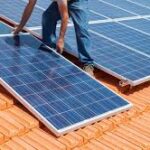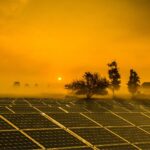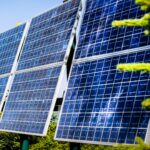Top Tips to Make an Energy Efficient Home - Proper execution goes a long way. The same holds true when you construct a new home that is formed on energy-saving fundamentals. Energy-efficient homes not only assist you with energy conservation but also support you save money in the long run. Moreover, your home becomes more long-lasting and pleasant.
With time, the energy cost is increasing and will continue to rise, making it compulsory to save energy. Energy-efficient home establishments or designs not only assist with energy conservation but also help you reduce your carbon footprint by converting to eco-friendly choices.
With combined planning and budget considerations, there are various choices to reduce energy costs. The Energy Information Administration (EIA) implies that residences in the United States have changed to be more energy-efficient over the past decade. Generally, fuel and electricity are changed to heat, light, and other kinds that can be used within a home. A smart home can better use these resources and hold an aesthetic factor that looks more appealing to the eye too. Various resources can essentially upgrade energy efficiency in automated homes.
You must want to reduce the risk of any faults when constructing or renovating your home. The below details will help you achieve a smart and energy-efficient formation by providing top tips to make an energy-efficient home.
Table of Contents
Top Tips to Make an Energy Efficient Home
1. All About Location
When constructing an energy-efficient home, location, shape, and construction elements are the main considerations that will essentially impact the heating and cooling needs. The highest use of passive solar energy obtained in winter and loss of heat gain during summer is the absolute situation. It is obtained by optimizing the location, orientation, and landscaping of the home.
Home orientation dictates the amount of sun your house will be gaining. This has a direct influence on your home’s temperature.
Construct the home to take benefits of different sun angles. The sun during the day is at a low angle in winter and a high angle in summer. Depending on this, build your home to lower heating and cooling expenses. Homes located on the south side of the street-facing north get more amount of sunlight at the back of the house. Residences on the north side get shade during the summer afternoons in their backyards. Likewise, if you are staying in a colder climate, you would want to select your windows’ location to be able to absorb most of the sunlight. South-facing residences absorb sunlight in the winter while blocking it during summer.
2. Landscaping & Shade
Landscaping using factors of shade can assist in preventing your house from absorbing extra heat, in fact, they assist in lowering the temperature by up to 6 degrees. You can make use of trees with canopies like the Yellow Buckeye and London Plane tree to give shade to your home. To block summer heat and allow the sunlight in during the winter, use deciduous trees. They are best for both seasons as they bloom in spring/summer and lose their leaves in winter. To deliver continuous shade and to help in protection from strong winds, use dense trees and shrubs.
Planting location is also critical. Growing trees on the east, south, and west sides will assist in keeping your residence cool when the heat is at its peak. East Trees create shadows on your home in the morning sun. South Trees create shadows on your house in the mid-morning and early afternoon. Trees planted in the west create shadows to obstruct the afternoon sun when the temperature is maximum, making them the most influential in lowering your energy bills.
3. Ventilation Systems
A well-created ventilation system for an energy-efficient residence offers coziness and assists in saving energy by reducing the extra use of electrical appliances used for heating and cooling purposes. Moreover, home ventilation also removes polluted air. The simplest ventilation systems are windows and electrical appliances with fans used to make the house cool. Your home design should make sure of healthy and natural ventilation.
The ventilation system is an essential factor of your energy-efficient house design as it helps in the flow of air and moisture across the building envelope’s barrier, and sometimes it also helps to move heat. A well-thought-out ventilation system can essentially reduce your overall energy utilization and assist in making your residence more energy-efficient.
4. Go Solar
Solar Panels can assist in building energy-efficient homes. If your region is open to the sun throughout the year, then solar panels will definitely lower your electricity bills. These panels don’t need extreme maintenance, so it’s a one-time investment that rescues you from a lot of stress and makes you self-sufficient.
Solar panels are an eco-friendly choice since solar energy is changed into electrical energy, lowering poisonous greenhouse gases that contribute to global warming. Once you have incorporated solar panels, you can use the energy for a host of various uses, such as a solar heater for heating water, bulbs, and technically any home appliance.
Conclusion
Energy-efficient house plans might be costly at the beginning but can come out to be remarkably advantageous in the longer term, thus allowing you to save money as well as energy. TDG Solar helps you to make your home an energy-efficient residence.
FAQs on Top Tips to Make an Energy Efficient Home
Question1. How can I make my home energy efficient?
Answer. You can make your home energy efficient by using solar panels, energy-efficient appliances, and so on.





